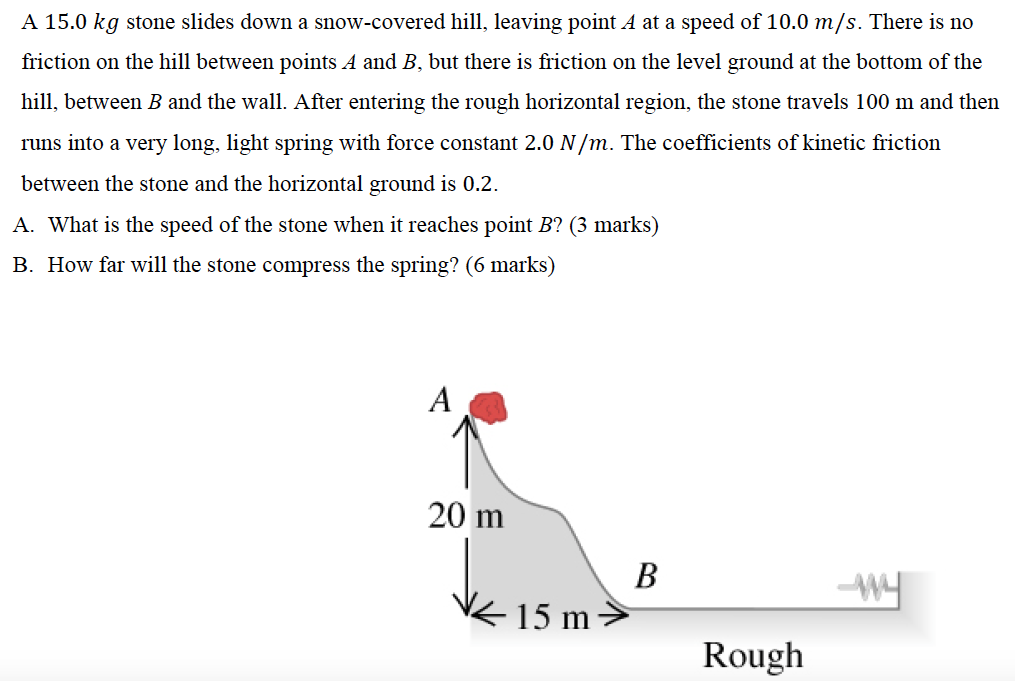A 15.0 kg stone slides down a snow-covered hill, leaving point A at a speed of 10.0 m/s. There is no friction on the hill between points A and B, but there is friction on the level ground at the bottom of the hill, between B and the wall. After entering the rough horizontal region, the stone travels 100 m and then runs into a very long, light spring with force constant 2.0 N/m. The coefficients of kinetic friction between the stone and the horizontal ground is 0.2 . A. What is the speed of the stone when it reaches point B? (3 marks) B. How far will the stone compress the spring? (6 marks)
